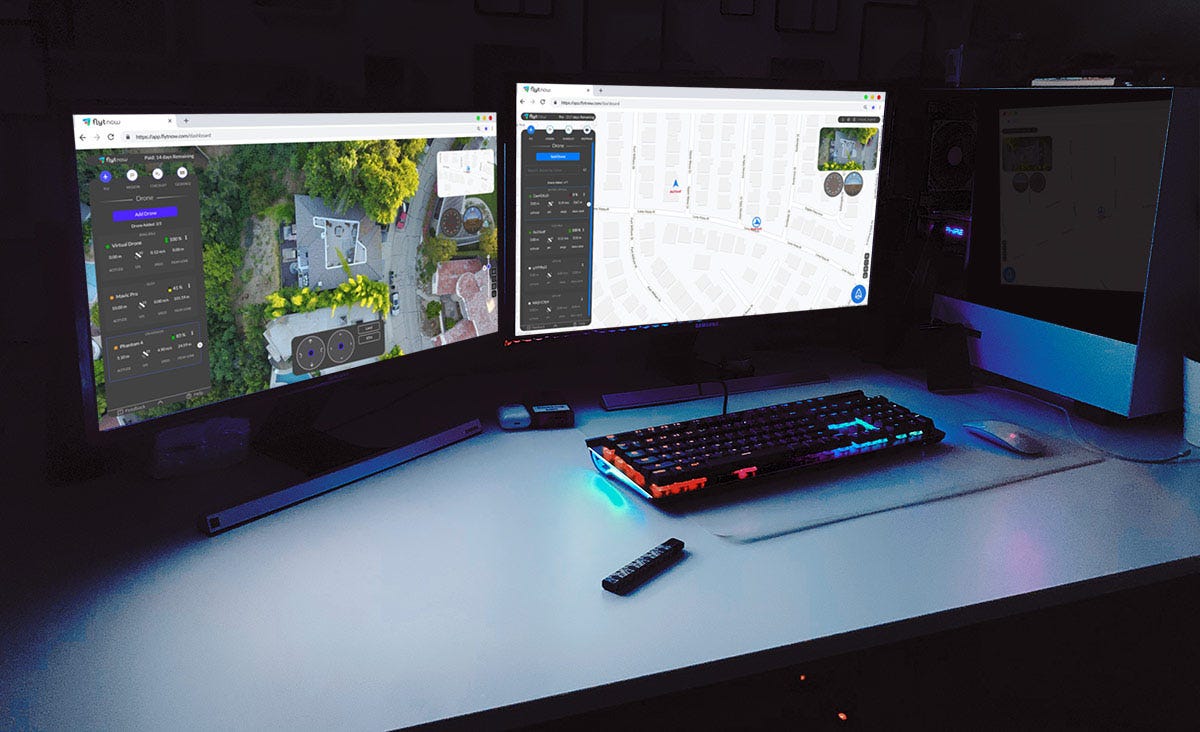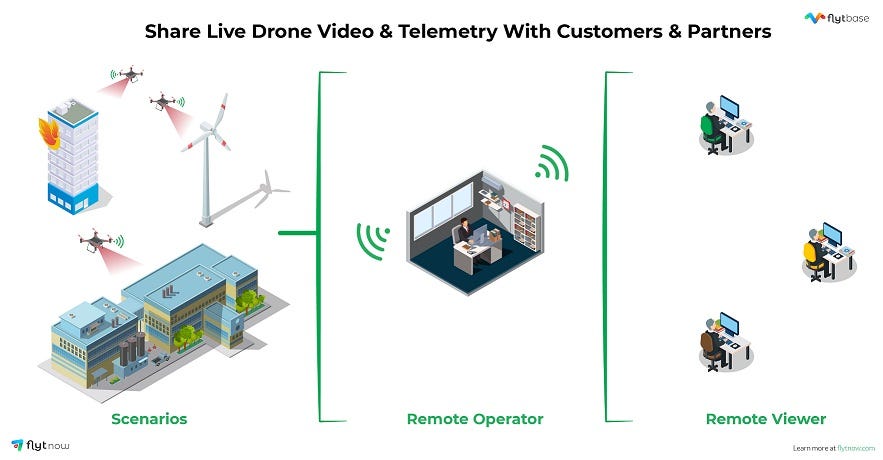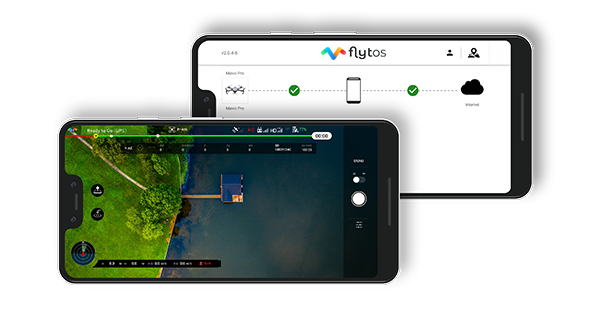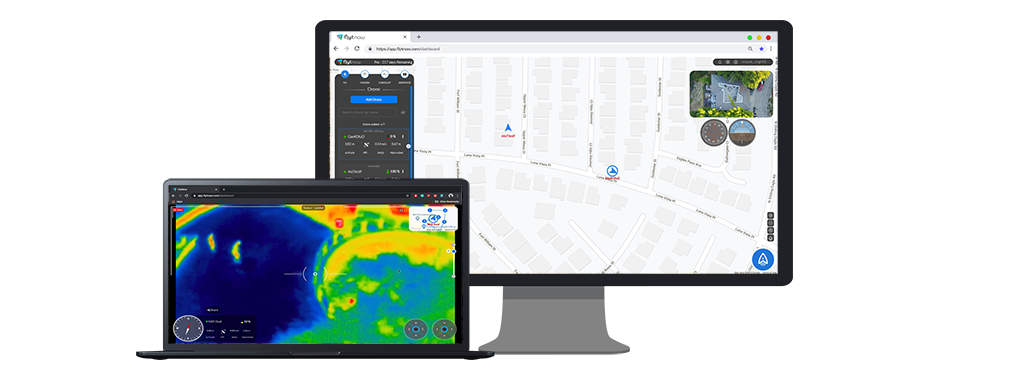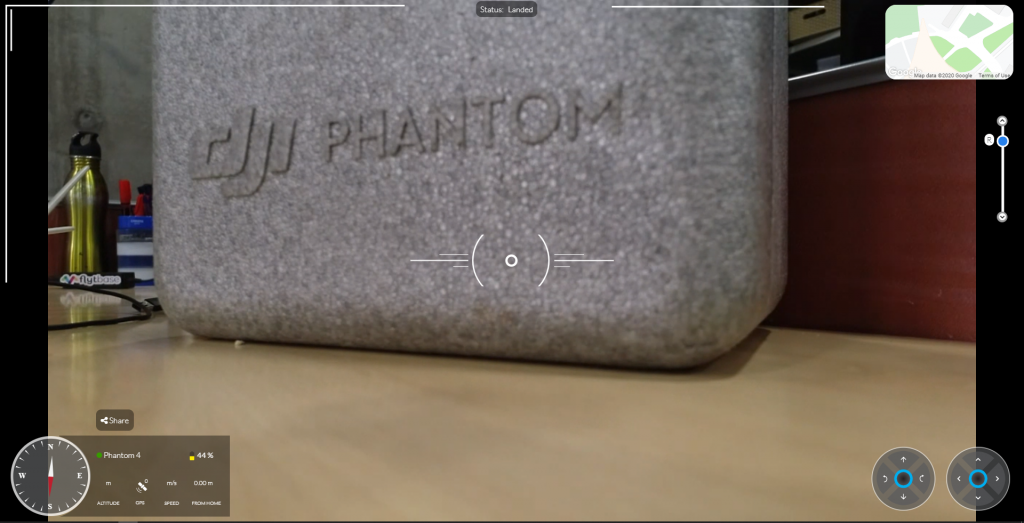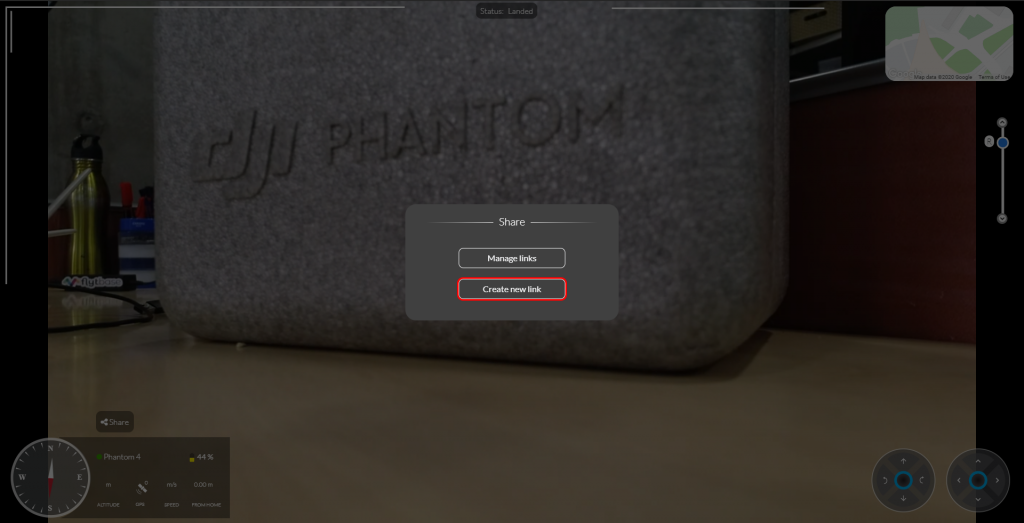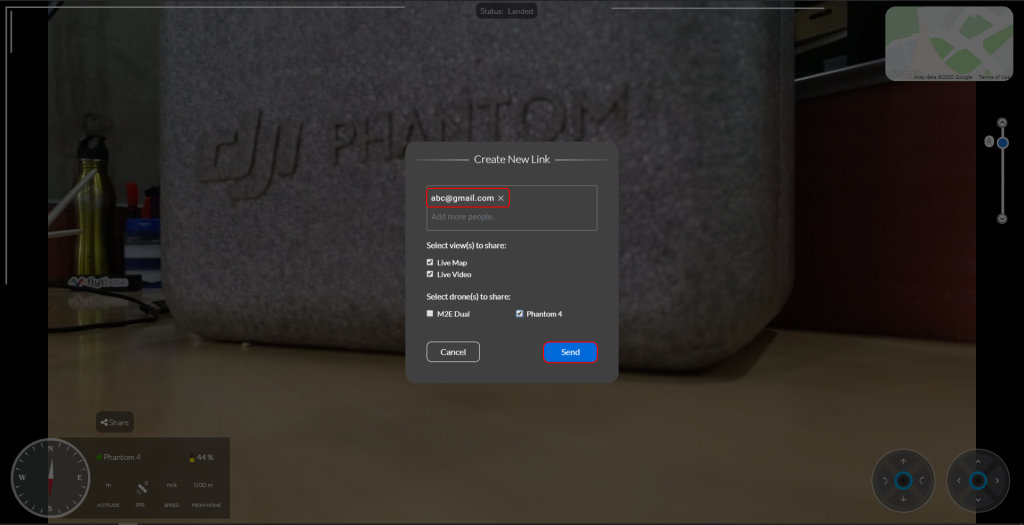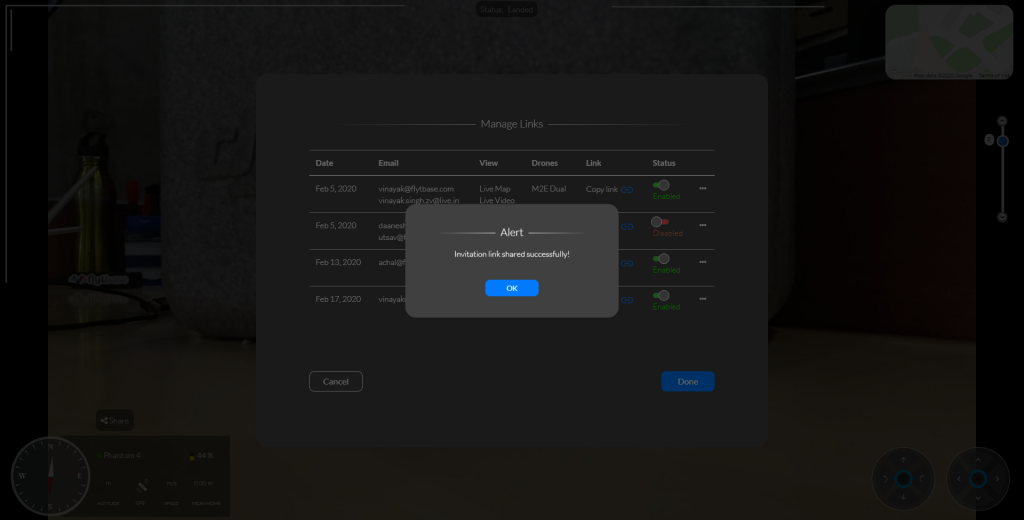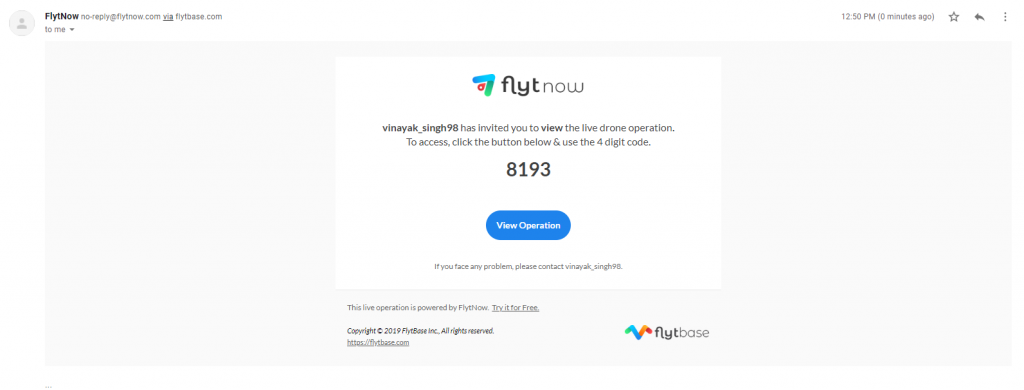Drones with cameras have both commercial and recreational applications. For commercial use-cases, the ability to live stream videos, with low latency, is crucial for the effective use of drones. This enables enterprise stakeholders to see things happening far away, in near-real-time, from a bird’s eye view. Many industries, sectors, and use-cases can leverage such remote drone operations, for example:
- Search & rescue
- Surveillance and security
- Monitoring and inspection
- Public safety
A cloud-connected, user-friendly solution can thus be leveraged by drone operators, specialized service providers, UAV system integrators, and enterprise drone program managers.
Multi-Camera Streaming via FlytNow
The capability to stream videos from multiple drones, simultaneously, is now available in FlytNow, the remote drone operations solution from FlytBase. Multiple camera (‘Multi-Cam’) streams can be viewed from a single operator dashboard, which can also be used to control multiple drones, their payloads, camera gimbals, etc.
Top 3 Use Cases of Multi-Cam Streaming
While there are numerous commercial applications that can benefit from drone fleets and multiple-camera streaming capabilities, these 3 seem to be gaining the most traction.
Security & Surveillance
Automated drone patrols are at the heart of surveillance of residential, commercial, and industrial premises. With the FlytNow multi-cam feature, surveillance drone operators can cover large areas from a single dashboard; it allows them to gain situational awareness during a security breach, with the added advantage of images & video surveillance from different angles.

Security stakeholders can combine different views (eg. thermal and normal camera feeds) and be much more effective during night time, low visibility conditions, etc.
Asset Inspection
Drones are used to inspect infrastructural and other valuable assets that are remote, hard to reach, or massive in size. With FlytNow, inspection personnel can view such assets from multiple angles, with the videos streamed in real-time, from multiple drones to a single dashboard in the command center or control room. This ability is useful in a range of remote inspection activities such as structural inspections, wind turbine inspections, cell tower inspections, oil & gas refinery inspections, and pipeline inspections.
Structural Inspections

Large structures under construction require to be inspected quite regularly – this includes visual observations of foundations, roofs, and key structural components. The inspection data provide insights into the overall condition, progress, and maintenance needs of such properties.

The traditional way of inspecting, which involved manual inspection of only some of the areas of a large structure, is severely lacking – not only in coverage but also in terms of safety. Drone footage, on the other hand, can both improve coverage, reduce inspection time, and eliminate almost all safety concerns. Drone fleets powered by FlytNow can give stakeholders automated aerial views, from multiple angles, of important but hard-to-reach structural locations.
Wind Turbine Inspections

Periodic inspections are an important part of the maintenance programs of wind-turbine sites, so as to maintain their efficiency, safety, and longevity. It’s important to check the structural integrity of the blades since different parts expand and contract differently under varying climatic conditions. Blades are also subject to damage from dirt, birds, snow, ice, etc.

Here, drones are now being used to rapidly, safely, and quickly scan the different parts of a wind turbine with highly calibrated IR sensors and high-resolution cameras. With FlytNow Enterprise, an inspector can capture different aerial views of a blade, control the camera gimbal remotely, and maintain a safe distance automatically.
Cell Tower Inspections

Cell towers are tall structures that need periodic inspections to keep them operational and safe. Drone-based inspections can help significantly reduce the amount of time that people have to spend on a tower for such inspections. Safety, speed, and cost are all factors in making remote aerial inspections more amenable for broad adoption. Using FlytNow, live streams from drone fleets can be delivered to a single dashboard; these videos can then be shared with guest users, regulators, and other stakeholders in cell tower inspections.

Refinery and Pipeline Inspections

Drones are being designed and deployed for corrosion detection, analysis of cracks, spillage, and leak detection in oil and gas refineries and along long-distance pipelines. The information gathered by drone fleets can be invaluable for maintenance and planning at these complex facilities, with billions of dollars of infrastructure at stake. The speed with which inspection data is gathered can be drastically improved using multiple, autonomous drones, powered by multi-cam streaming available via FlytNow.

Public Safety
The biggest risk in public safety is to first responders, who have to be on-site without timely situational awareness. They also have to deploy fire trucks, ambulances, police cars, and other equipment – without first being able to assess the situation.

US-based technology company Phirst Technologies, which focuses on public safety solutions, has integrated autonomous drones into the CAD system that supports the 911 service. The idea is to dispatch drones from a unified dashboard to assess a situation before sending human responders. The solution is called FIRST iZ, and they are using FlytBase technology to power their drone automation.
Drones thus offer a compelling capability for incident response – public safety authorities can deploy them first, gain real-time awareness, and make better-informed decisions about people and equipment deployments.
Search and Rescue

Drones are actively used worldwide for search and rescue operations because they can cover a large area in less time while providing a bird’s-eye view. In 2018, police in the UK used drones to find a semiconscious man on the cliff of Exmouth; they used thermal imaging to locate and save the person.
These capabilities are now available in FlytNow so that search parties can quickly dispatch a fleet of drones and stream the live footage from them to a single dashboard, thus expediting the search and rescue process.
Firefighting

Drones fitted with IR sensors can find people trapped in difficult situations such as forest fires where visibility can be quite poor. In 2018, fires scorched more than 150,000 acres in less than two weeks in California. 16 teams of public safety officials clocked 500 drone flights in 3 days. UAV flight data was used to aid search and rescue operations, and pinpoint the path of the fire.
Since such operations may require scanning a very large area, of the order of hundreds of square miles, features like multi-cam streaming are crucial for the deployment of a large fleet of thermal drones.
Law Enforcement

During the COVID-19 pandemic of 2020, drones deployed in the city of Ahmedabad, India helped monitor lockdown and mitigate the spread of the deadly coronavirus. A central command center was established, with the FlytNow dashboard receiving live video streams from multiple drones flying across the city.
—
To get started with FlytNow visit our Get Started Guide.
or contact us at https://flytnow.com/contact
